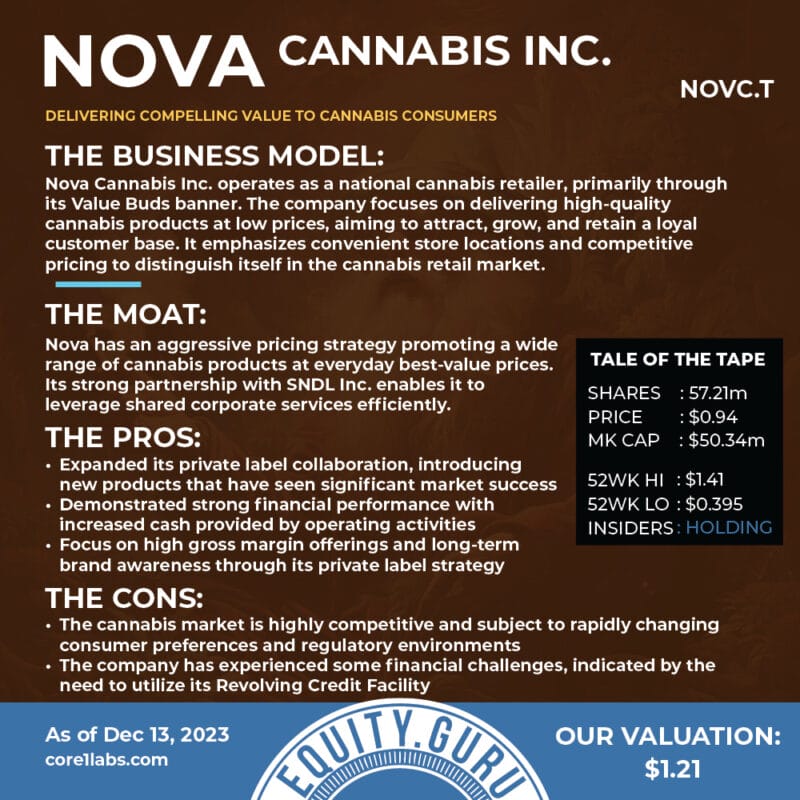The road for Canadian legal cannabis operators has been littered with hardship since the industry took a header in 2019. Restrictive regulations, combined with bad business practices in a saturated market produced a blood bath of bankruptcy that caused investors to run for the hills.
With little available capital and a staggering over capacity, private retailers continued to commit margin suicide competing over too few customers, so that by the beginning of 2023, cannabis giants, Tilray Brands (TLRY.T) and Canopy Growth (WEED.T) were trading more than 90% down from their all-time highs. It seemed that all was lost when Aurora Cannabis (ACB.T) announced in August that it would diversify its trade by selling orchids. Now as we round the corner on 2024, is the storm finally passed?
It isn’t so much the passing of the storm, but more of a proving ground. Many cannabis sector players will be looking for financing in the next 6-13 months and to gain the necessary trust of investors, they need to show a maturity that wasn’t present in the first generation of legal cannabis ventures. This maturity will allow sector participants to leap several necessary hurdles to make their businesses a sustainable going concern.
First, most marijuana consumers couldn’t care less about obtaining high-end artisan brands. They are price conscious and want a decent high without sacrificing their bank account. Both retailers and growers need to recognize this silent majority and cater to it if they hope to survive. Companies like Nova Cannabis (NOVC.T) are attempting to pivot toward this trend.
Here’s what we think:
*Update: Nova Cannabis saw a lot of action today as stock pushed up $0.09 by end of trading after a positive report from Eight Capital which raised its share target from $2.50 to $3.75


Nova is making moves to service a new generation of cannabis consumers, but regulations in Canada need to change if the legal cannabis industry hopes to expand and finally stamp out the black market trade which currently makes up about 30% of the sector.
The rules cramping sales and promotion are antiquated and unfair. The inability to openly advertise or distribute makes it nearly impossible to hear about new products or purchase said products outside of licensed outlets. Once we can buy a cannabis drink in a restaurant or order an edible from room service, it will open incredible opportunities for sector growth and awareness.
Despite these challenges, the Canadian recreational cannabis market is expected to continue an upward trend, with revenue in the industry expected to expand by 17.5% in 2023 for an estimated year-end value of $6.4 billion. It may not be as blue sky as originally thought but estimates still call for growth and if the sector operators remain frugal and adaptable, and the government can loosen the reins somewhat, the industry still presents opportunities for investors. Remember to do your due diligence, adhere to your risk profile, and speak with an investment professional before making any changes to your portfolio. Good luck to all.






